Indigofera australis
By Robyn Heywood
If asked to choose a favourite dye that has been used over the centuries, I think a lot of dyers would chose Indigo. In that regard, Australia is fortunate in having our own native indigo in Indigofera australis.
The blues were dyed using the Hydrosulphite Vat method on non-mordanted yarn, the greens using the direct method on alum mordanted yarn and the other colours using the dye pot method.
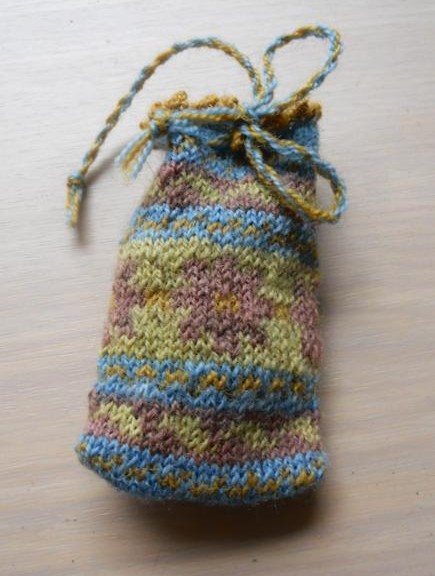
Over the last 5 years, I, along with a number others, have done a lot of research and testing on this plant to work out methods to extract the blue directly from the leaves without converting it to a powder first. In the process, I have learnt that Indigofera australis is not only a source of blue but of a number of other colours, depending on the method used and the time of the year the plant was harvested. I have also learnt that the weather the plant was grown under seems to affect the results. Until the last two years or so, where I live in Victoria was in the grip of a prolonged drought. It was during this time that the content of Indigo in the plant seemed very high and I was successful in obtaining the deepest blues. Conversely, over the last 2 years of high rainfall, I am struggling to get any blue — the blue is weak it tends to be not very stable, often changing to a blotchy combination of beige and blue.
The same leaves used in a normal dye bath can yield colours ranging from beautiful yellows to beige, mushroom, and deep pink-browns. All of these colours, when overdyed with indigo from the same plant, give a range of colours from greens to deep browns. Solar dyeing has given blues, pinks and mauves.
Below are the methods and conclusions that I reached in 2009 and 2010.
Plant Description
Indigofera australis, a member of the pea family, is a delicate, open and often straggly shrub with grey-green pinnate leaves. It has typical pea-type flowers in short spires in the leaf axils in colours ranging through pinks to soft purple, and opening between September and November, depending on the weather. After flowering, 10 cm long green seed pods appear containing square hard seeds from which young plants are propagated. The seeds are hard and need soaking overnight in hot water before sowing.
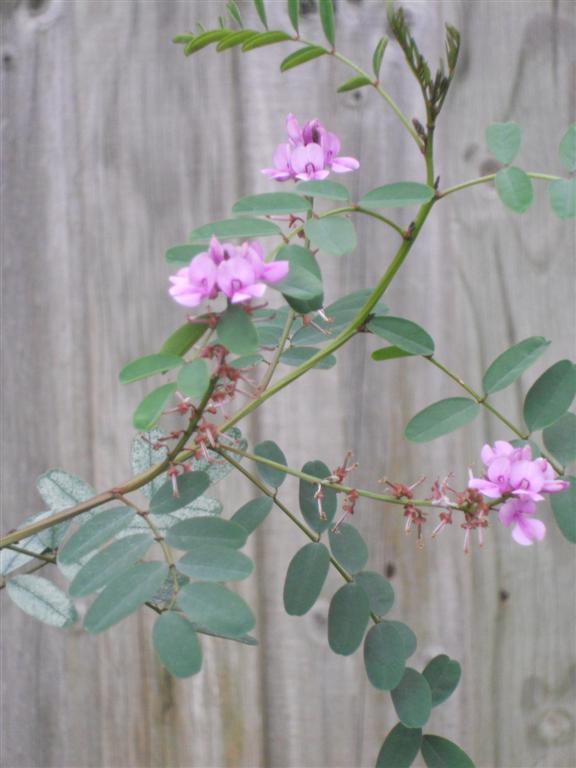
Historical Uses
Aborigines used the roots of Indigofera australis to obtain a fish poison and the flowers for dye.
Dye Method 1: Hydrosulphite Vat
This method produces a range of blues with non-mordanted wool, cotton, linen, etc., depending on the number of dips, the time of the year and the weather conditions. Plants harvested in September of 2009 produced deep blues, while the colours from those harvested in January of 2010 were wishy-washy and unstable. Plants harvested in September 2010 again yielded deep blues. Alum mordanted skeins can produce beautiful greens in both protein and cellulose fibres.
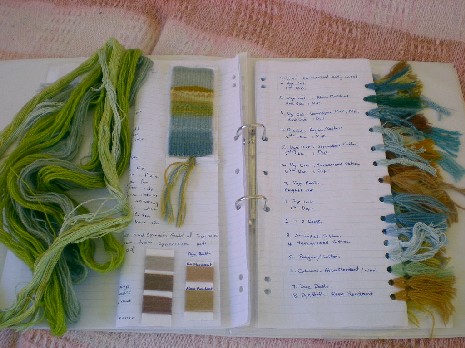
- Pack 150 grams of leaves and branchlets into a glass jar (such as a 300 g coffee jar), cover with water and allow to sit for 24-48 hours in a warm spot.
- Strain the liquid off, squeezing the leaves to get every last drop possible. The leaves can be retained for a normal dye bath.
- Dissolve a teaspoon of washing soda in warm water and add to the jar, stirring.
- Pour the liquid back and forth to introduce some air, until the liquid turns green and a bluish froth appears.
- Return liquid to the jar. Raise temperature to 55 C by sitting the jar in a sink of warm water.
- Sprinkle a teaspoon of Sodium Hydrosulphite1 over the top of the liquid and maintain the 55 C temperature for 1 hour. The liquid should be a bright yellow.
- Carefully immerse a skein of yarn into the liquid and leave it for 20 minutes; the skein turns brilliant yellow. Remove the skein and expose it to the air; it changes slowly from yellow to green and finally to blue. After exposing to the air for 20 minutes, the skein can be returned to the liquid for further dips.
| Indigo bath with bluish froth | Indigo bath after hydrosulphite treatment | Yarn in indigo bath |
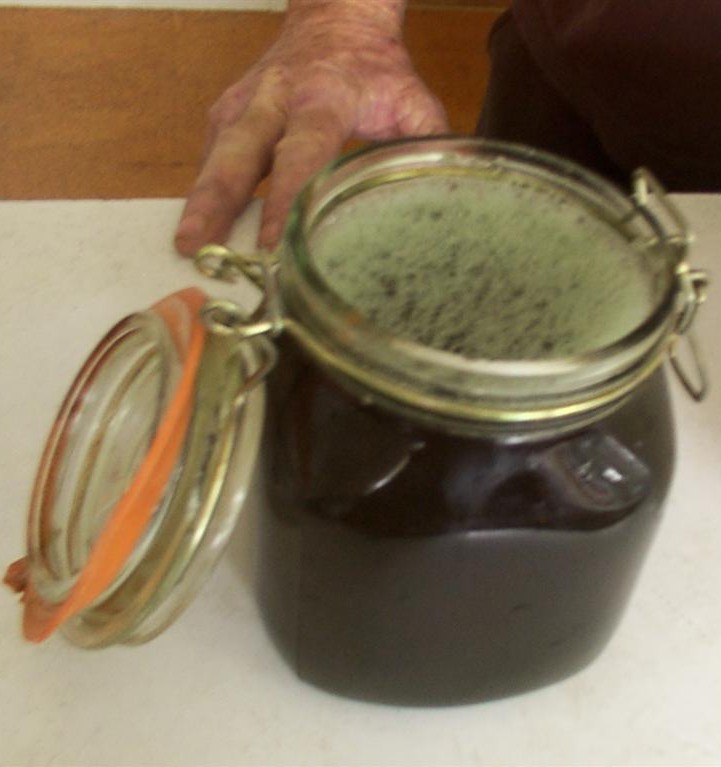 |
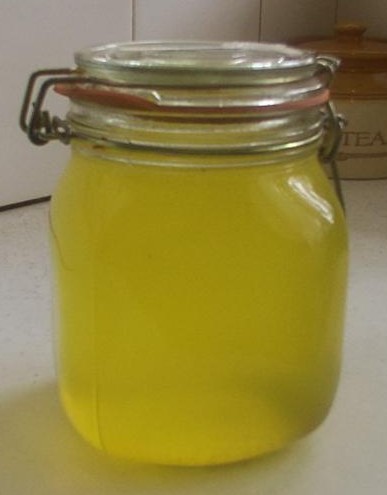 |
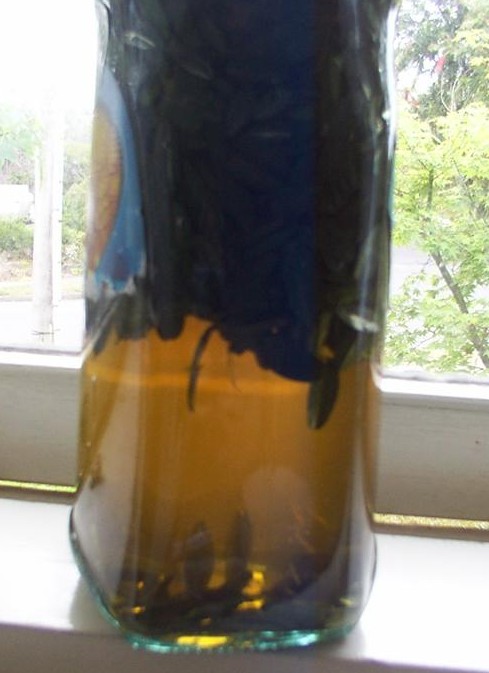 |
| Photograph Copyright by Robyn Heywood | Photograph Copyright by Robyn Heywood | Photograph Copyright by Robyn Heywood |
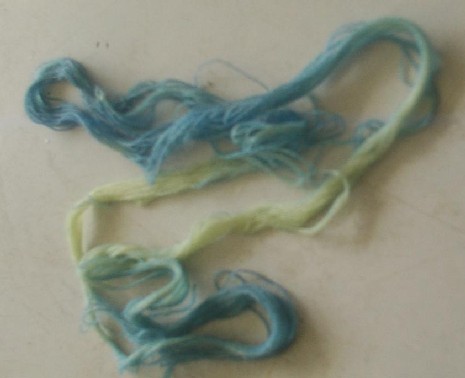
Method 2: Normal Dye Bath
Using this method, non-mordanted wool skeins dye a warm mushroom colour, whereas alum-mordanted wool skeins can dye tan through to yellow, again depending on time of the year and the weather conditions. Non-mordanted wool dyes with plants harvested in January 2010 dyed pale beige, while alum-mordanted wool dyed bright yellow.
- Put reserved leaves from the Hydrosulphite Vat into a dye pot with skeins of yarn and heat slowly to 82-88 C. Maintain the temperature for 45 minutes. Remove the pot from the heat and allow it to cool overnight.
- Remove the skeins, wash them in warm water with a bit of detergent and rinse in clear water.
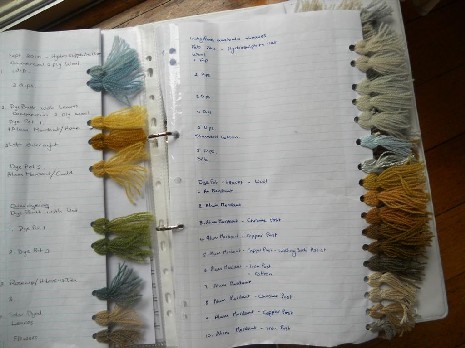
Method 3: Direct Method
Using this method, non-mordanted wool and cotton skeins dyed with plants harvested in January 2010 turned a pale blue; alum-mordanted skeins turned a brilliant green.
- Chop small branches and leaves and put them into a glass container, fill with water to the very top and seal with an air tight lid. Leave to soak for 48 hours in a warm sunny position.
- Strain carefully, removing all the foliage, trying not to introduce any oxygen. Carefully return the liquid to the jar. Put it in a warm sunny position and introduce skein which has been pre-wetted. Leave the skein in the liquid for 20 minutes.
- Remove the skein carefully, again trying not to introduce any oxygen. Hang it exposed to the air for 20 minutes, by which time it should have turned a pale blue.
- Repeat the above procedure until the shade of blue required has been achieved or there is no further colour change.
Method 4: Solar Method
Using this method with plants harvested in January, 2010, wool fibre dyed a navy blue colour where it was in close contact with the leaves, whereas the rest of the fibre was a pinkish mauve colour.
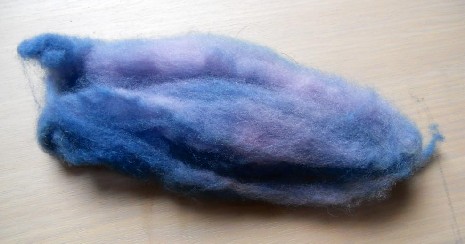
- Pack a glass jar with chopped leaves, small branches and skeins of yarn.
- Add water to fill the jar.
- Put the jar in a warm sunny position and leave for a couple of weeks.
Conclusion
The amount of blue that can be captured from Indigofera australis varies due to the time of the year and the weather, which makes it such a surprise packet. All the methods described here have shown promising results with both protein and cellulose fibres. I think more experimentation will yield additional interesting results. For example, it would be interesting to try these methods with other countries' native indigo and see if the results were similar.
References
Banyule City Council, Indigenous Plants for Your Garden, p. 9, March 1998.
Graeme, Elsa. Indigo Dyeing: Direct Wool Dyeing with Austalian Indigofera.
Handweavers Spinners and Dyers Guild of Tasmania, Fleece and Fashion, p. 17.
Indigofera australis. Australian National Botanic Gardens and Centre for Australian National Biodiversity Research, Canberra. www.anbg.gov.au/gnp/gnp1/indigofera-australis.html
Nunn, Robin. Indigo. The Australian Handweaver and Spinner, Volume XXXIII, No. 1:12-13, 1980.
Textile Journeys. Notes from The Handweavers, Spinners and Dyers Guild of Tasmania Inc., pp. 152-153.
1 Sodium Hydrosulphite can be purchased from supermarkets in the form of Colour Dye Remover under brand names such as Rit or Dylon; use the one for whites.
 Turkey Red Journal
Turkey Red Journal
